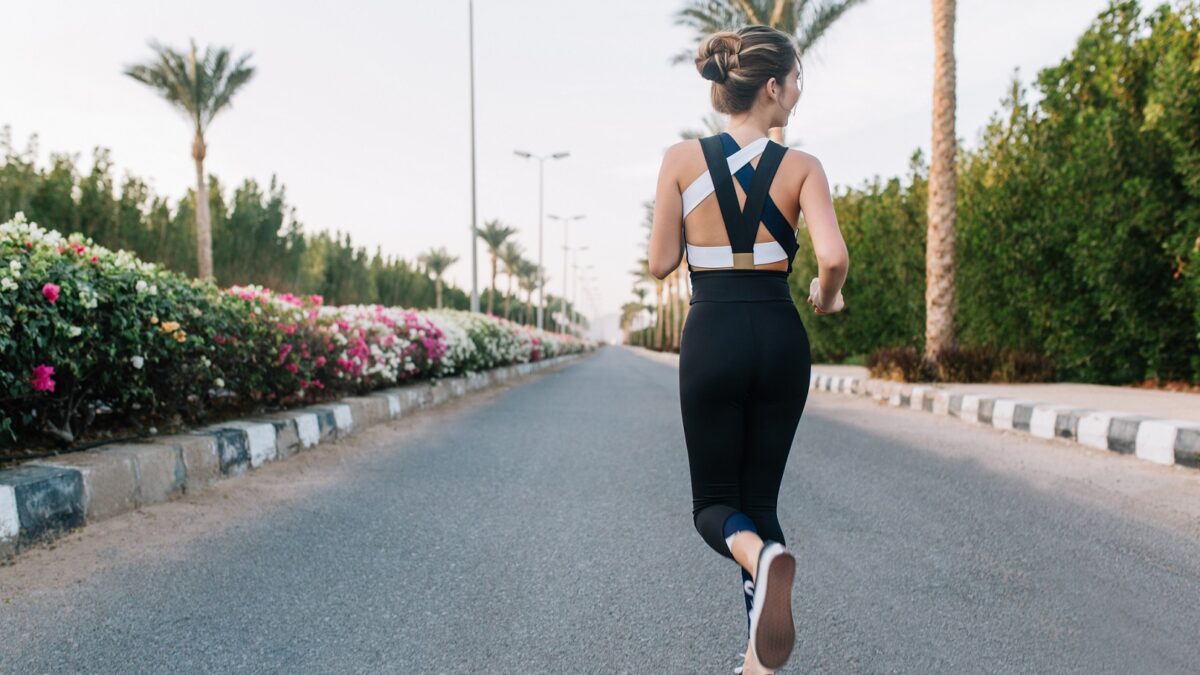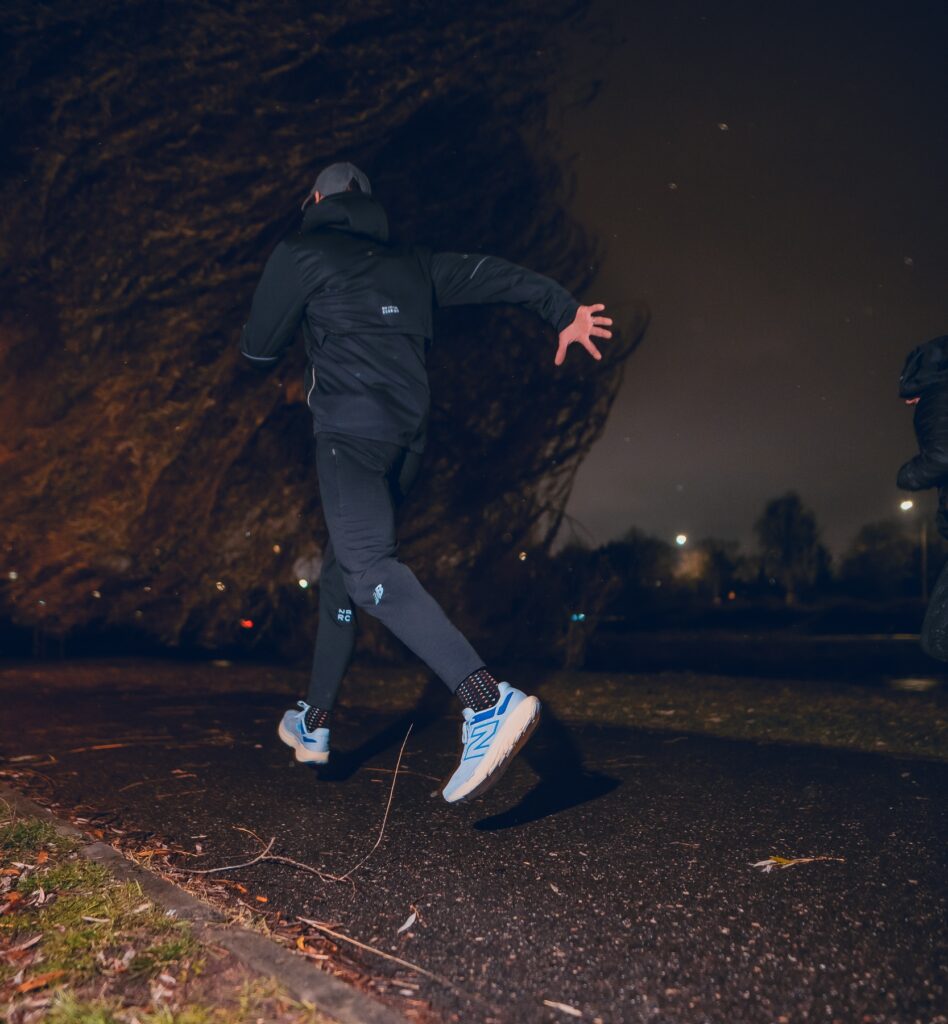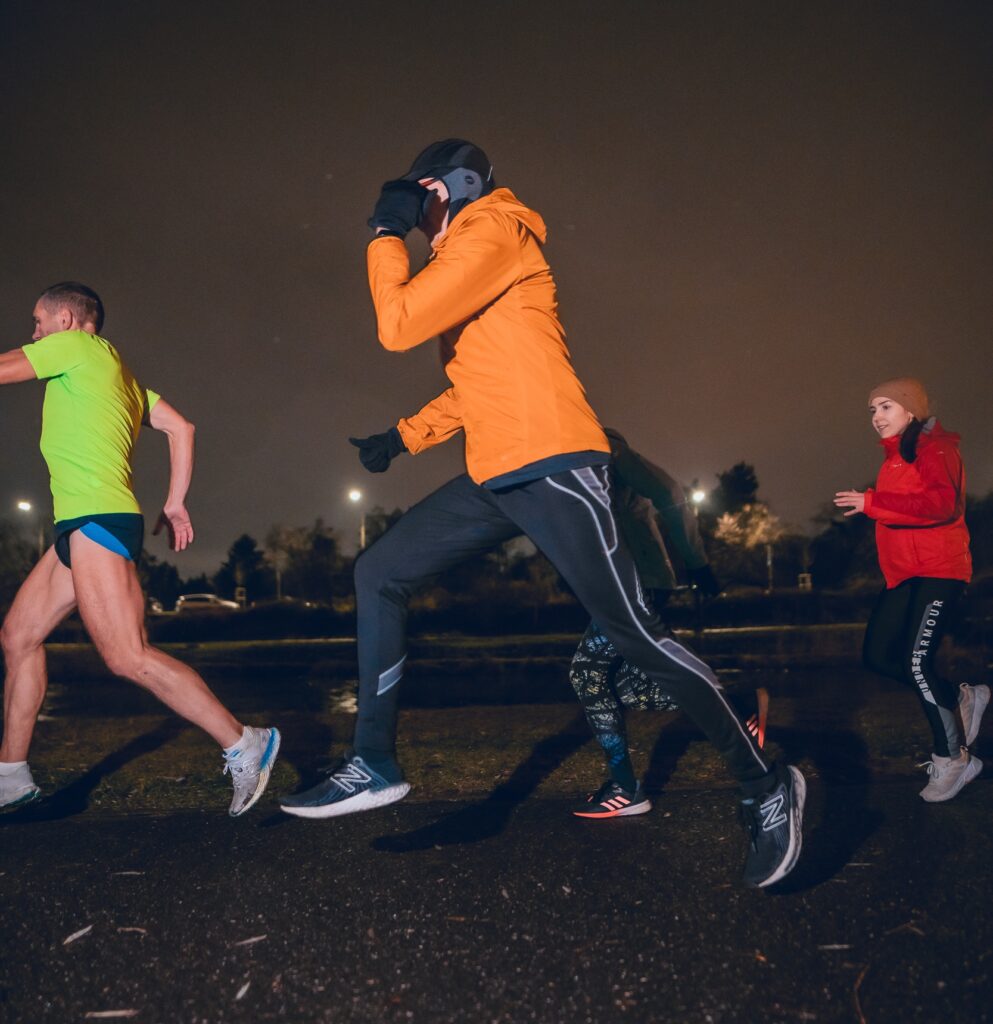
If we want to achieve better and better running results, we need to make changes to our training plans over time. Add new training units or modify those we already perform. This will allow us to cross another border, behind which there are new personal records. Generally speaking, from time to time we need to take another step forward, but it may also turn out that it is worth taking a few steps back… literally.
Getting to the point, it’s about running backwards, which has been gaining popularity for several years and finding more and more supporters. This is more than just a passing fad, as there have already been several scientific studies and publications around this type of training that confirm the benefits of such activity. Running backwards can be important for our overall fitness, have a positive impact on the functioning of our knees, and even improve running economy.
What is running backwards?
Running backwards is also known as reverse running or retro running. This is a form of training that involves running in the opposite direction to what we are used to, i.e. instead of moving from back to front, we move from front to back – it sounds quite complicated, but it definitely is not.
The point is that during this form, we move in the direction our back is facing, not forward. Such activity is classified as retro movements, i.e. it involves the opposite of normal movement. This type of running can be done as part of a competition, training or just for fun. However, remember that it can be quite a challenge and requires good coordination and balance. It’s a great way to diversify your running routine and add a new challenge to your training.

Benefits of retro running
Running backwards can have many benefits, both physical and mental. Here are some reasons why you should include running backwards in your training routine:
- Reduces the load on the knees – Reverse running can be a good form of exercise for people suffering from knee pain because it has less impact on this part of our body compared to traditional running. The advantages of such activity were described by, among others, Pauline E. Roos in his 2012 study: Patellofemoral joint compression forces in backward and forward running. It indicates, among others: that when running backwards, runners land lighter and with less body load, and at the same time there is less force acting on the knee joints. Nick Barton, who co-authored this study, states that many people, including runners, have knee problems. We showed that the compressive forces behind the patella were reduced in most cases and this was independent of running speed. It is therefore possible that running backwards as part of a specific rehabilitation program prescribed by a physiotherapist may help patients return to a good level of activity;
- Strengthens various leg muscles – when running backwards, we will engage the hamstring muscles and the buttocks themselves more, which will strengthen them while putting less strain on the quadriceps muscles. This will be additional stimulation for our body;
- Boosting your metabolism – retro running allows you to burn more calories than traditional training. This happens because we force our muscles to work in a way that is inconsistent with their previous norm. A study conducted at the University of Stellenbosch in South Africa: The Effect of Backward Locomotion Training on the Body Composition and Cardiorespiratory Fitness of Young Women, showed that women who introduced walking and running backwards for six weeks lost 2.4% of body fat during this time. This was also confirmed by a study conducted at the University of Milan, which showed that running backwards required as much as 30% more energy from participants, so they burned more calories;
- Performance improvement– running backwards involves different muscle groups than traditional running. While regular running primarily works the quadriceps muscles, running backwards works the calf muscles to a greater extent. This can help prevent muscle imbalances and strengthen the entire posterior chain. Additionally, the increased range of motion in the hip and ankle joints during reverse running can improve flexibility and improve running form. A study conducted in 2016 at the University of Dayton The Effects of Backwards Running Training on Forward Running Economy in Trained Males, showed that running backwards improved running economy in athletes, thereby increasing their ability to traditionally run. During the study, 8 experienced and trained male runners spent ten weeks running backwards on a treadmill, and the study showed that their forward running economy improved by 2.54%, even though their VO2max and body composition remained the same.
- Improving body posture– such running has a positive effect on your posture during training. By engaging different muscle groups and forcing the body to move in a different way, running backwards helps improve overall posture and body awareness. This is because we naturally force our body to run in a more upright position;
- Brain stimulation– in addition to the physical benefits, it is also worth mentioning the mental benefits. Running backwards can also have a positive effect on cognitive functions and overall brain function. It stimulates the brain in a way that traditional forward running does not. It requires greater concentration, coordination and mental performance, which leads to improved cognitive functions. Additionally, adding such a training unit to your plan may make you feel more excited about running.
Running backwards is a great way not only to maintain your current form but also to improve your running results. Such training has many advantages, including better body posture, increased muscle oxygenation and better strengthening of the leg muscles. Additionally, retro runs can help you run faster because they stimulate and activate muscles that we do not use as much in forward running, and they will provide additional drive. We will also support our balance, agility and coordination.
How to start running backwards?
When introducing backwards running into your training plan, remember to implement this training unit slowly. It is important to start slowly and gradually increase the intensity as time goes on and our ability to do so improves. It is best to start by walking backwards for short distances, which will improve coordination, and balance and adapt the appropriate muscles of our body to such movement.
The entire guide to running backwards was published in 1981 (updated in 2014) by Dr. Robert K. Stevenson. In his work, Reverse gear describes not only the many benefits of running backwards but also discusses the technique of running backwards and how and where to train in this way. It indicates several important elements that are worth paying attention to during a retro run:
- Location– we should choose a part of the path without any obstacles, with an even surface, preferably in an open space;
- Technique– when running backwards, keep your arms above your feet and close to your body and be careful not to lean your body forward or backwards. The take-off should be from the ball of the foot;
- Vigilance– look over your shoulder frequently to avoid collisions or other unwanted accidents.
In his book, he also suggests that you should initially start training by walking backwards and gradually increase the pace. Once you have mastered the movement, you should initially do short backward runs as part of your regular running training to slowly get used to the feeling and increase the distance you run over time.
Disadvantages of reverse gear
Running backwards can be a great way to diversify your training program and improve your overall fitness, but it also has its drawbacks. It requires better coordination and balance, therefore (especially in the initial phase of exercise) it may cause injuries caused by, among others, falls. You can also easily strain your neck and shoulders during this type of training because you have to look over your shoulder most of the time.

It is also not easy to find a suitable reverse running location that provides a safe and straight surface, away from traffic and with little traffic. You should also take into account “strange” glances from passers-by and even other runners. Retro running is not that popular yet.
Record-breaking backwards runs
The Guinness Book of Records has quite a large group of activities that involve running backwards. For example, fastest 100m backward run took only 13.17 seconds and was achieved by Christian Roberto López Rodríguez from Spain, who also holds the record in the 200m back race (30.99s) and running backwards over a distance of 400 m (1 min 11,20s).
You will run through the fastest half marathon back, which took 1 hour 40 minutes and 29 seconds. This was done by Achim Aretza from Germany as part of the 19th TUSEM August Blumensaat in Essen, Germany, in 2009. Whereas the fastest half-marathon run by a woman backwards was beaten by Shantelle Gaston-Hird from Great Britain in 2019. Her run took 2 hours 16 minutes 3 seconds.
Fastest marathon time back however, it belongs to Xu Zhenjun from China, who needed only 3 hours 43 minutes and 39 seconds to cover the king’s distance. More interesting records can be found in the article: The strangest running records in the world
Why is it worth running backwards?
Although initially running backwards may seem quite strange and even slightly intimidating, it can be an interesting challenge and a varied training session that brings many benefits.
In summary, running backwards can help improve your speed, agility and endurance. It will be a great cardiovascular workout that can help improve your overall fitness level. It will help build running endurance, strengthen leg muscles, improve balance and coordination while running, and restore or develop good body posture. Moreover, this type of exercise puts little strain on the joints, so it can be beneficial for people who have joint problems or are prone to injuries.
